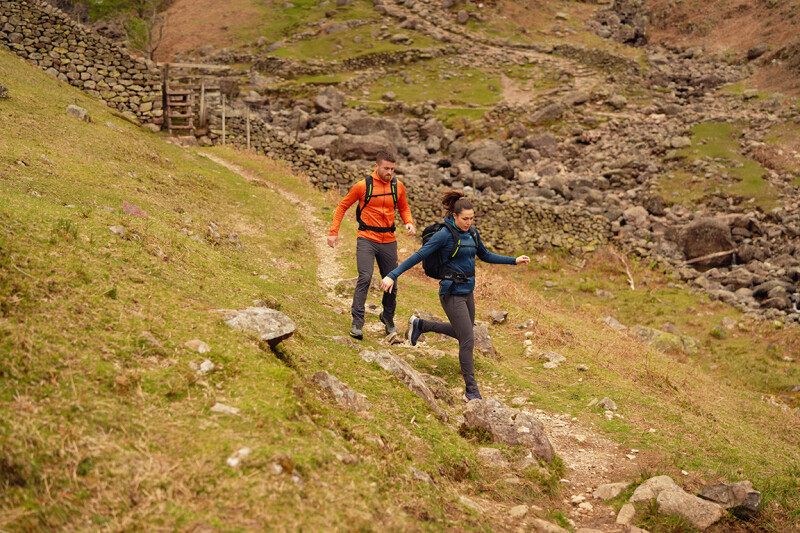In 2022, U.S consumers are embracing the emergence from a pandemic-oriented lifestyle rooted in home-based activities to a social one that includes trips to the gym, playing fields and fitness studios. With runners once again able to participate in races, run on gym treadmills and exercise in a wider range of locations, purchasing shifts are happening in the running footwear market.
One impact has been a change in running and purchasing habits involving trail running. Boiling it down, the trail running category lost market share to road running in the 12 months ending June 2022, according to retail sales data from The NPD Group. Part of this shift could be attributed to the trend of consumers who previously purchased trail running shoes for walking or hiking at the height of the pandemic doing so to a lesser extent this year now that additional fitness options are available.
Trail Running Stays Strong
This spending shift, however, does not diminish trail running’s importance to the long-term health and growth of the running footwear market. In the 12 months ending June 2022, trail running shoes accounted for $453 million in revenue, or 12 percent share of the overall $3.9 billion performance running shoe category, which is down slightly from the year before but still elevated compared to pre-pandemic levels.
Market size aside, trail running shoes have a different appeal than road running products, attracting a larger consumer base to engage with the running industry. Understanding the unique characteristics of the trail running consumer provides the industry with critical insights to generate growth for the category.
Behind the Numbers
To put actual sales figures behind these statements, 11 million U.S. consumers purchased trail running shoes in the 12 months ending June 2022, according to NPD Checkout data, which is down three percent from the prior year. Among other insights from NPD:
- Interestingly, consumers shop in-store more frequently for trail running than for road running shoes. Retailers should consider that trail running might elicit slightly more floor traffic than other running footwear, which can steer important choices concerning merchandising and shelving shoe models.
- Reviewing the demographics for trail versus road running footwear, 55 percent of purchasers are women for both shoe categories, but age is a point of distinction. Consumers aged 45 and older account for 60 percent of trail running footwear purchases, which is about nine points higher than road running shoe buyers.
- Because trail running shoe buyers tend to be a bit older, on average, than overall running shoe buyers, retailers and manufacturers might want to lean in on the needs of aging athletes. Add-on categories such as insoles, mobility tools and injury prevention devices all appeal to older athletes. Knowing that the trail running consumer skews older also has implications for in-store apparel assortments.
- Another point of distinction is that overall shopping basket size is 15 percent smaller when trail running shoes are purchased than when purchasing road running shoes. Both retailers and manufacturers should carefully consider what related products to sell as lower-cost add-ons for their trail running consumers.
- As I recently walked through retail store aisles, I noticed that the trail runner product assortment includes well-paired items like hydration packs, gaiters and higher quality apparel. This technical assortment may need to be shifted to include other, more value-based products.
- In terms of market basket composition, other unrelated shoe types are the items most likely to be purchased at the same time as trail running shoes. This finding suggests that the buyer is taking advantage of a single trip to purchase not just for themselves, but also for other family members and friends.
- Beyond footwear, socks and shorts are the categories most likely to be purchased. The likelihood of multiple shoe purchases along with add-on apparel items guides retailers to a viable opportunity for cross-category marketing and promotional campaigns.
A Retailing Shakeup
For the running footwear market and most other industries, a return to pre-pandemic behaviors is shifting sales across categories, but mounting economic pressures are also shaking up retailing in 2022. The retail landscape is particularly challenged this year because average selling prices are increasing and potentially suppressing unit sales.
However, a deeper understanding of the consumer profile – from demographics to shopping behaviors – provides a powerful set of fact-based observations to effectively manage these pressures and begin executing on new sales and marketing strategies almost immediately.
Such insights become even more powerful when coupled with other point-of-sale data assets, leading to more effective promotions, better selling strategies and overall improvements in sales performance at run specialty retail.






